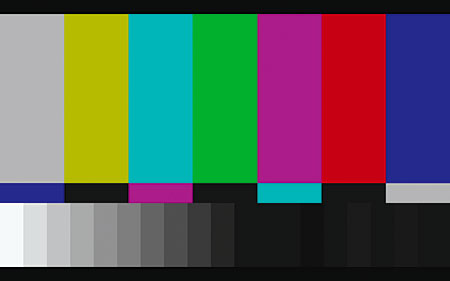Dve Digital Video Essentials Download

A Guide to HDTVs [Page 14] Calibration You may have heard the term before, but just to be clear, Calibration on an HDTV is a process which involves configuring your TV's settings so that it provides the most accurate and pleasing image quality. Given the large number of brands, models and settings available across HDTVs, there's absolutely no way for me to provide recommended settings for each TV. In any case, using other peoples' settings is usually not optimal, given everyone has different viewing environments, source components and tastes. The best way to correctly configure your TV is with a combination of understanding what the various basic settings do, knowledge of the general procedure to run through, and awareness of the inherent limitations of each type of technology as covered in the rest of this guide.
Home About Us Joe Kane Personnel Careers Press Kit Press Releases News Terms of Use Products AVFoundry Video Forge Generator Patterns; Digital Video Essentials – (DVE). DVE UHD version 0.9 DVE HD Basics Test & Demonstration Materials – HD DVD DVE Pro – A Six Disc Set D-Theater DVD-.
Panasonic DT50 review DT50 is part of Panasonic’s new 2012 LED line-up. With its sleek design and ultra slim frame, Panasonic hopes to challenge the South Korean TV. Don't they do that at the factory!), they have probably never heard of 'Avia' or 'Digital Video Essentials'- the two most widely used DVD's for calibrating a home. Another Note: You can do pretty much everything with Avia that you can with DVE, both have certain strengths and few weaknesses, and both will give you an.
Throughout this section you will repeatedly see the term 'accurate' used. Calibration of a TV is an attempt to get it as close as possible to accurately reproducing source material the way it was intended. Hp Compaq 6820s Linux Drivers.
This is usually done by changing your settings so that the results on your screen match known standards for HD video material. The result is that if an actor is supposed to be wearing a pale red shirt in a movie for example, a calibrated TV will show that shirt in exactly the same shade of red that is intended. If that pale red shirt comes across as a neon bright red shirt on your TV, it's not accurate. In reality, some people will not like an accurate image for a range of reasons.
This depends in large part on what that person has been conditioned to seeing. More often than not, the average person will be used to oversaturated colors, and will prefer cooler rather than warmer color temperatures. Thus when their TV is calibrated to the correct, whites will appear slightly yellowish to their eyes, and colors may seem muted. Similarly, the correct Contrast and Brightness settings may not represent a bright and vivid enough image, and the correct Sharpness may not look crisp enough to their eyes at first. Since personal taste is involved, there is scope for you to adjust the settings to reach a reasonable compromise between accuracy and the image which most pleases your senses. However it is always best to start off with the correct settings and then fine tune them as you wish.
Initial Steps There are several initial considerations before doing any type of HDTV calibration: • Make sure the TV is set to Home mode, not Shop or Dynamic mode, if such modes are available on your TV - check your manual for details. Shop mode or Dynamic mode is primarily designed for getting the customer's attention in a brightly lit store environment, and is not accurate, safe or energy efficient for your TV to run at home. • On a plasma, you should first age the phosphors at least 100-200 hours, ideally up to 500 hours or more if possible, before any calibration - see the Image Retention, Burn-in & Dead Pixels section for more details. Any calibration done before this break-in period is completed may have to be redone as the phosphors continue to settle.
• Perform the calibration in the lighting you normally use to watch the TV. That is, don't calibrate the TV in bright daylight if you mostly watch at night, and vice versa, because this will result in incorrect settings for your viewing environment. If you watch the TV in both brighter and darker lighting, then calibrate two separate picture presets to suit each environment. Cables An important aspect of getting optimal image quality is the cabling you're using. This requires a brief run-through for those unfamiliar with the different types. The hierarchy of common cabling from worst to best is as follows. •: This type of cable is among the most basic, and carries the video on one cable (typically yellow).